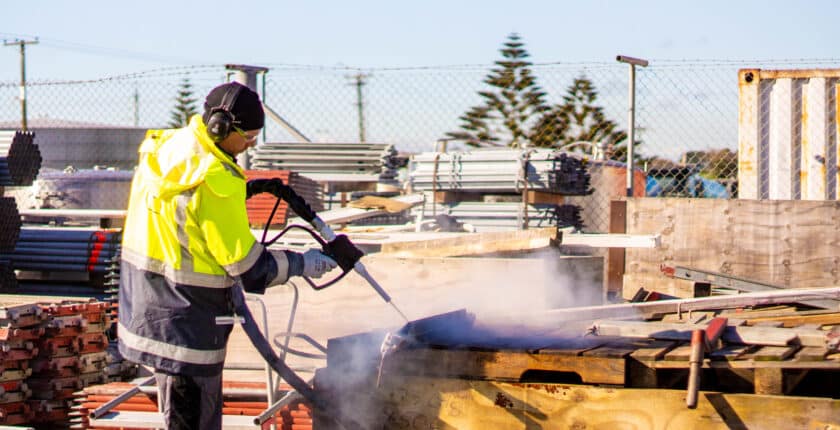Dry Ice Blasting – A New Revolution in Industrial Cleaning
In today’s world, when concerns regarding the environment are growing, the demand for environment-friendly cleaning methods is increasing. The traditional methods of cleaning, such as pressure washing have come under scrutiny. Companies are turning to other eco-friendlier alternatives. One such alternative is dry ice blasting. It is considered superior to other traditional methods such as scrapers, sanders, and wire brushes. This process is known to save time and clean as thoroughly and neatly or more so in comparatively less time.
It is also faster and time-saving. It is used in any type of industry which has equipment that needs to be cleaned regularly like automotive, power plants, aviation, packaging, plastics, and many more. This non-invasive form of cleaning technology is safe and effective on everything from the bottoms of boats to electrical switches and turbine fins.
Dry ice is a solid form of carbon dioxide (Co2). Dry ice is as hard as plaster, and under atmospheric pressure, it sublimes at a temperature of -78oC.
Dry ice blasting or CO2 blasting is a process in which dry ice pellets (about the size of grains of rice) are shot out of a nozzle at a supersonic speed to rid the equipment of residues including oil, paint, ink, glue, dirt, grease, food, mold release agents, rubber and several other contaminants. The pellets are accelerated using compressed air. Upon impact, the dry ice transforms from a solid state to a gaseous state without passing through the liquid stage.
There are three phases in a dry ice blasting process.
Energy Transfer:
Kinetic is transferred when the blasting gun fires dry ice pellets onto the surface. The dry ice pellet sublimates upon impact and is softer compared to other cleaning media such as sand, grit, or beads. It’s a non-abrasive form of cleaning and does not cause any damage to the equipment.
Micro Thermal Shock Effect:
It occurs when the freezing dry ice pellets strike a much warmer contaminated surface leading to a thermal shock between the surface contaminant and the substrate. At that point, cracking and delamination of the contaminant occur.
Thermal Kinetic Effect:
In the third and final phase, the dry ice pellets explode when meeting the surface. As the pellets warm, they convert to CO2 gas, which expands rapidly underneath the contaminated surface. Then the contaminant either falls to the ground or becomes airborne. The dry ice evaporates, and only the contaminant is left behind.
A Comparatively Safer Process
Dry ice blasting is quite effective and a safe process for the following plus points:
- No water or harsh chemicals are used in the process, so there is no additional waste being generated.
- There is no risk of slippage as with the pressure washing process.
Precautions Needed
However, certain safety precautions should be taken while conducting the process:
- Proper ventilation is a must. CO2 can be dangerous when concentrated in confined spaces. CO2 is 50 percent heavier than air and can displace oxygen and strangulate a person if there is no proper ventilation.
- It is imperative to wear earplugs, as the process generates deafening noise.
- The temperature of dry ice can be as low as -110 degrees F and can instantly freeze the skin. Wear gloves when handling dry ice.
- Always use protective clothing, and a face shield when handling CO2 pellets or dry ice blasting units.


